Despite the bright sun that was shining half an hour ago, there’s a cloud bursting now, right outside my window. This cloudburst follows another one last night that knocked out our electricity and blew down three birch trees and a maple.
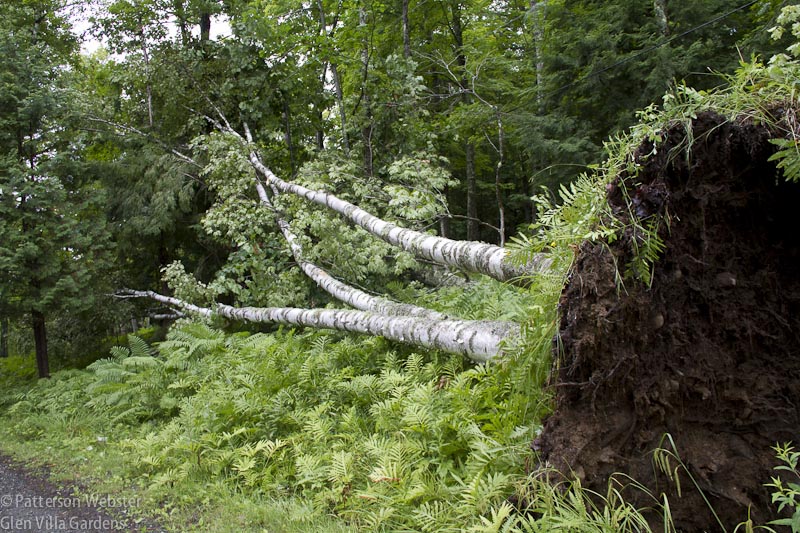
The birch trees brought down the maple tree. All the trees were big but the birch trees were shallowly rooted.
Cloudbursts happen. Rain comes. But these storms are faster and fiercer than anything we are accustomed to here, in the Eastern Townships of Quebec. Our rain is normally gentle. (Or persistent. Or non-existent. Or as variable as rain is in most locales.) But rarely do the winds blow and the clouds burst the way they have this summer.
Cloudbursts can cause damage, and not only to trees. The Aqueduct was designed to handle a normal flow of water, with a margin for more. But it can’t handle the amount of water that comes in these sudden storms.

Water is supposed to fall down chains into the steel basin. Instead it was exploding from the elevated channel onto the top of the gabion wall, creating a roar and a mess.
The result? A hole in the carpet of sedum that tops the gabion wall.
Yes, into every garden a little rain must fall. It’s necessary for the farmers, pleasant for the ducks and far from discouraging to the thistles in the Upper Field.

I’d like to see a bumper crop of something other than thistles in the Upper Field, but thistles are what is growing best.
Still, rainbows come after the rain. (Can you tell I’m an optimist?)

Who needs a pot of gold when the lake turns pink? Or when boys throw sticks into the water just for the fun of it?
Some storms bring benefits that are quite unexpected. Last fall, a wind storm blew the top off an old maple tree. Luckily the branches missed our house and the garage; even the Chinese pot in the little flower bed escaped unharmed. Instead of removing the trunk, I asked for ideas on what to do with it in a post titled Going and Coming.
You came up with some doozies — one of my favourite ideas was from Charlotte, a writer who suggested sharpening the end of the trunk like a pencil. Others suggested leaving it for insects and birds. But the most inspirational idea came from Liz who suggested cutting a wedge from the trunk to show the growth rings and following that with a ceremonial tree planting. Her suggestion settled it. I decided that a tree as old as the maple could not be removed. Rather it should be honoured, even venerated.
And whenever I’m there, I’m content. Regardless of the weather.


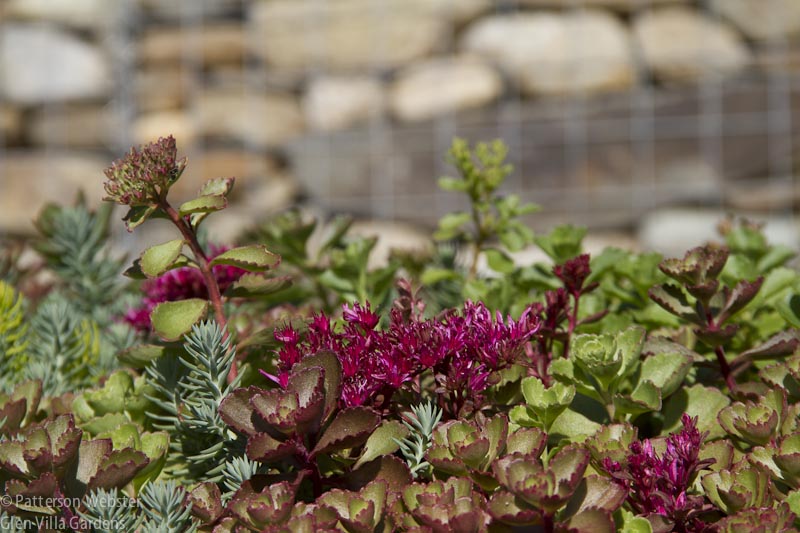

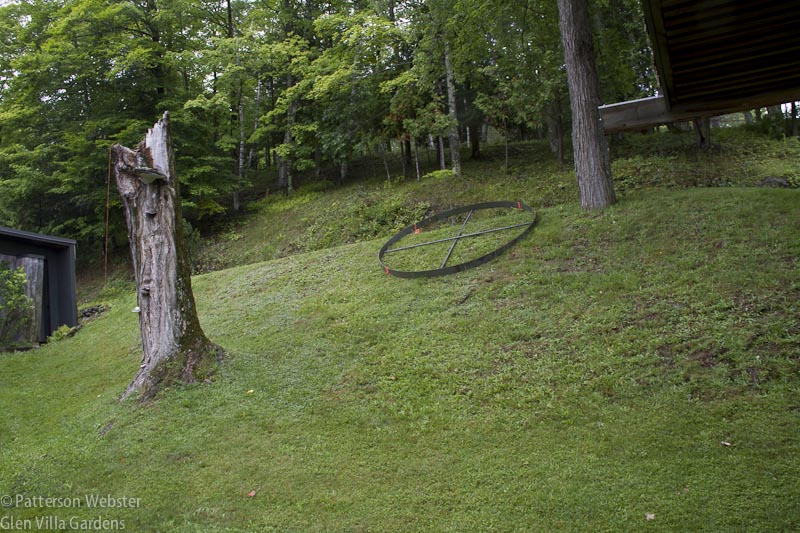
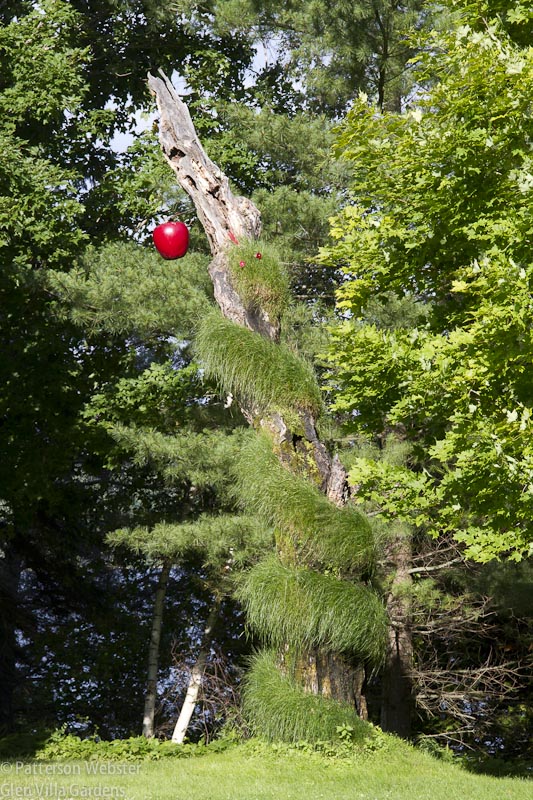


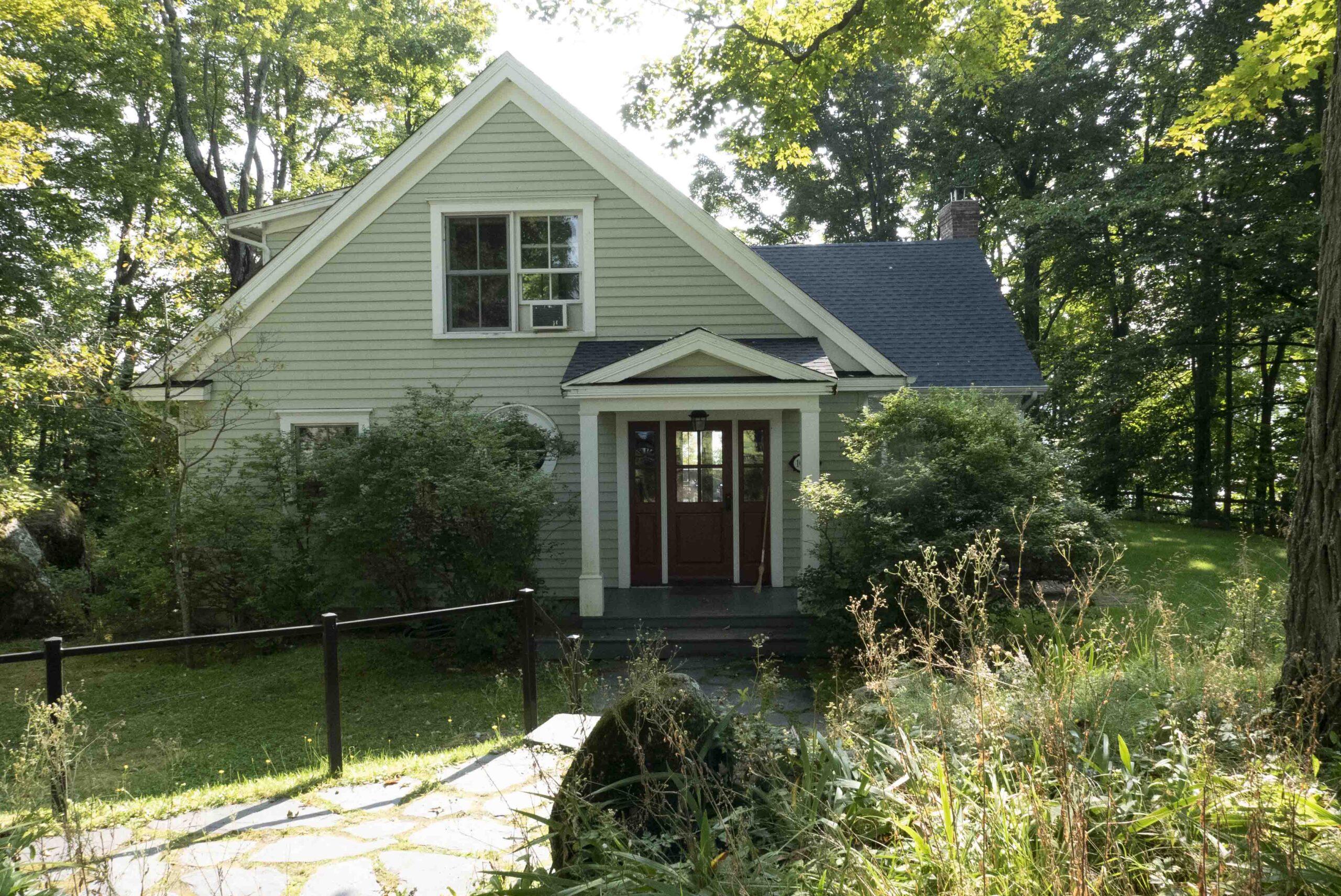
Seems like you need to put a nice flat rock where the sedum hole is.
A very sensible solution, Kathy. I have just the right rock. Can’t believe I didn’t think of doing that, so thank you. (And aren’t simple solutions often the best?)
Well, it didn’t occur to me that the increase in water volume would cause the water to overshoot its target, but as soon as I saw the photo, I thought, oh yeah, water does that. It’s hard to plan for *everything*, including more rain than you ever expected.
You are so right!
I love the way you incorporate art into your garden. The tree rings installation sounds wonderful.
Unfortunate about your birch trees. Weather everywhere is becoming more extreme with climate change, and still so many powerful people resist tackling the problem. Oy. Still, looking forward to seeing your place, new art and all!